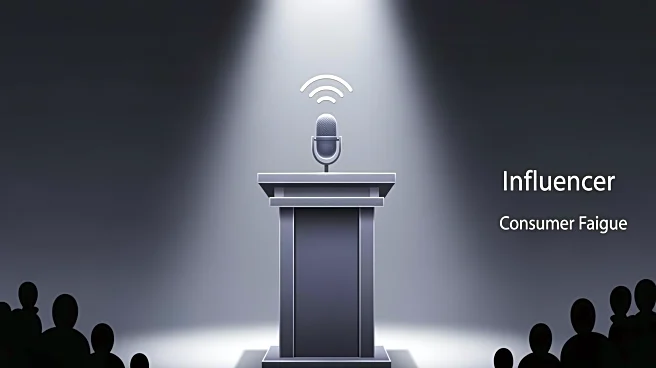What's Happening?
The Society for Human Resource Management (SHRM) is emphasizing the importance of adapting leadership strategies to effectively manage multigenerational workforces. As workplaces become increasingly diverse
in age, leaders face the challenge of addressing the varied expectations and needs of Baby Boomers, Gen X, Millennials, Gen Z, and the emerging Gen Alpha. SHRM's report indicates that over 50% of Chief Human Resources Officers (CHROs) prioritize leadership and management development, recognizing the need for structural adaptation beyond traditional empathy-driven models. The current environment, described as brittle, anxious, nonlinear, and incomprehensible (BANI), requires leaders to provide clarity, confidence, and flexibility. SHRM's Purposeful Leadership model offers a framework for engaging diverse teams through commitments to inspire, engage, innovate, achieve, and become.
Why It's Important?
The shift towards multigenerational leadership is crucial as it impacts employee retention, performance, and workplace culture. By recognizing generational differences as strengths, organizations can foster environments where all employees feel valued. This approach not only supports individual growth but also aligns with organizational goals, enhancing overall productivity. As Gen Z and Gen Alpha bring technological affinity and mental well-being advocacy, while Baby Boomers offer experience, the ability to unite these diverse perspectives is vital for sustaining competitive advantage. The emphasis on empathy and adaptability in leadership is increasingly seen as non-negotiable in navigating the complexities of modern work environments.
What's Next?
Organizations are encouraged to conduct leadership assessments and tailor development opportunities to meet the unique needs of employees at different career stages. By incorporating inclusive behaviors into performance reviews and offering flexibility with accountability, companies can create systems that cater to individual needs while maintaining clear expectations. Additionally, fostering a sense of community through informal conversations and open spaces for connection can enhance collaboration and trust across generations. These steps are essential for preparing organizations to adapt to an increasingly dynamic future, turning generational differences into assets rather than obstacles.
Beyond the Headlines
The focus on multigenerational leadership highlights broader cultural shifts towards inclusivity and diversity in the workplace. As organizations strive to humanize leadership and align people to purpose, they contribute to a more equitable and supportive work environment. This approach not only benefits employees but also strengthens the organization's ability to innovate and respond to market changes. The evolving leadership strategies reflect a growing recognition of the value of diverse perspectives in driving organizational success.











